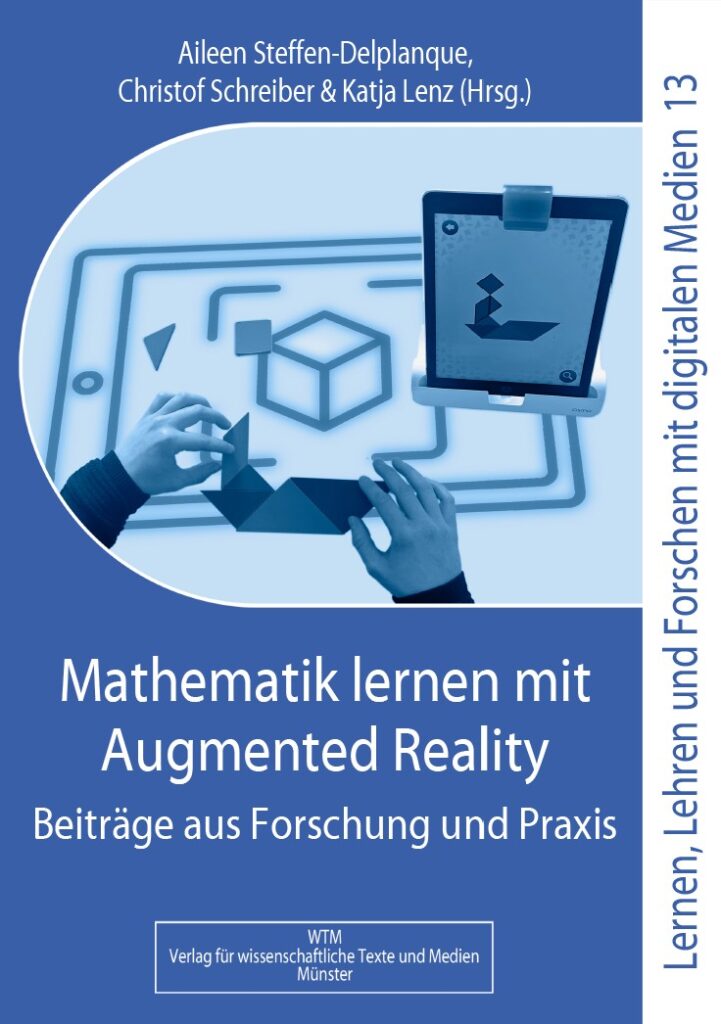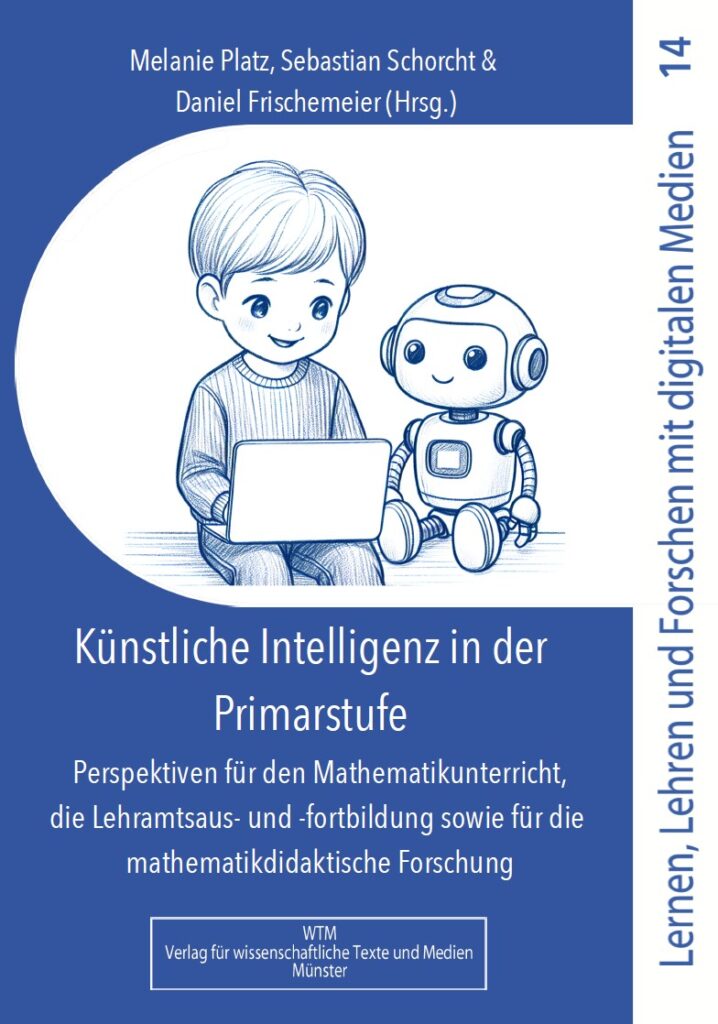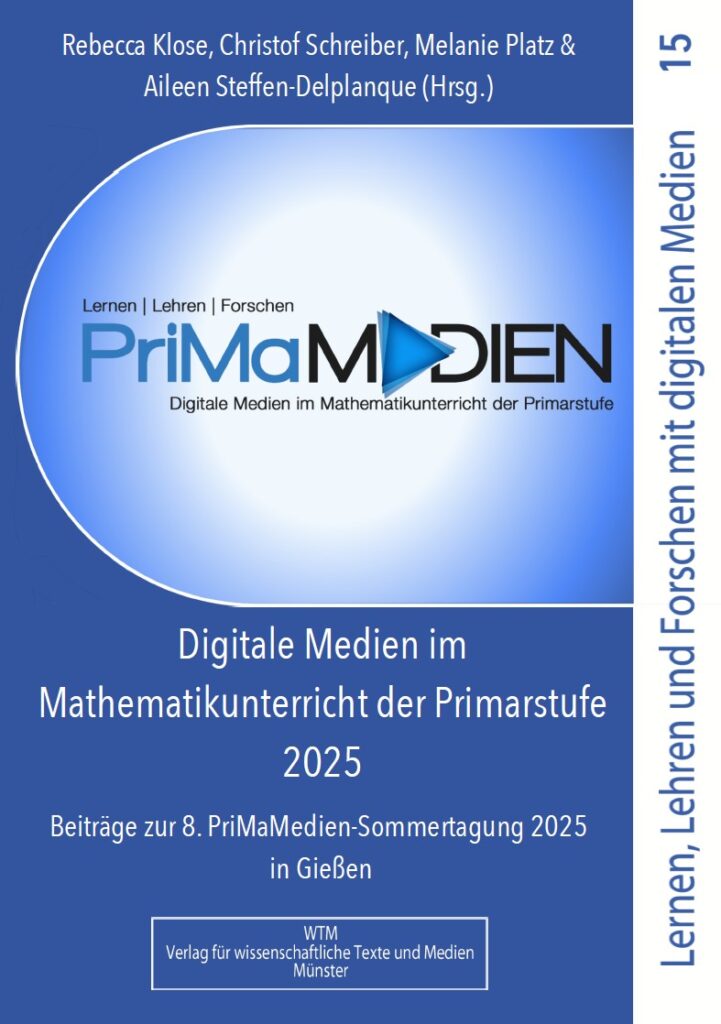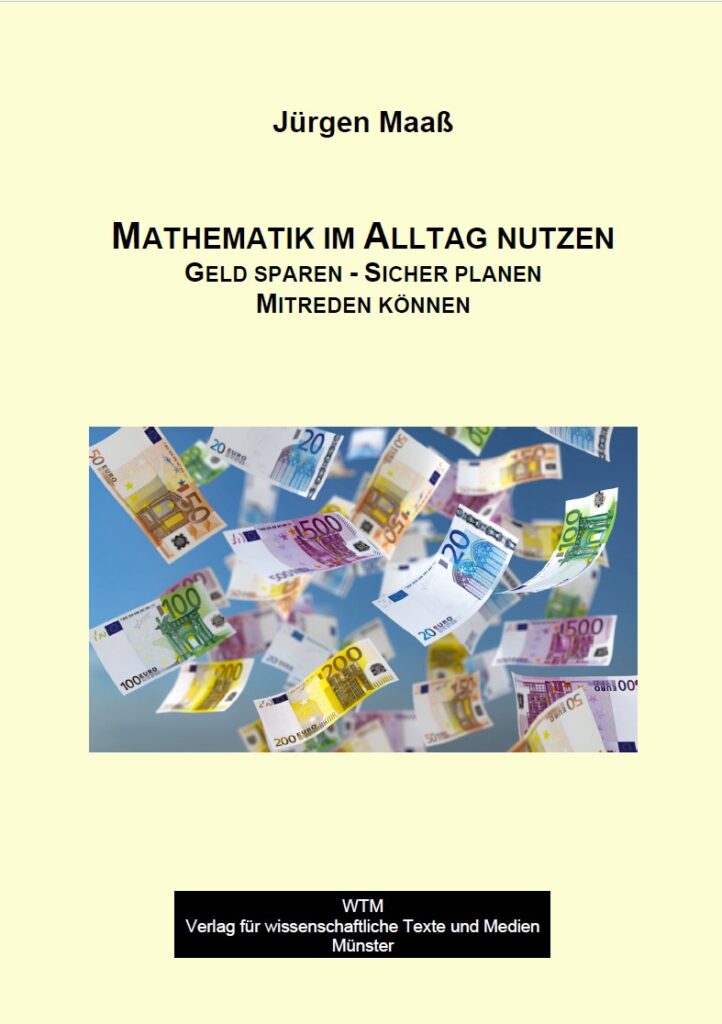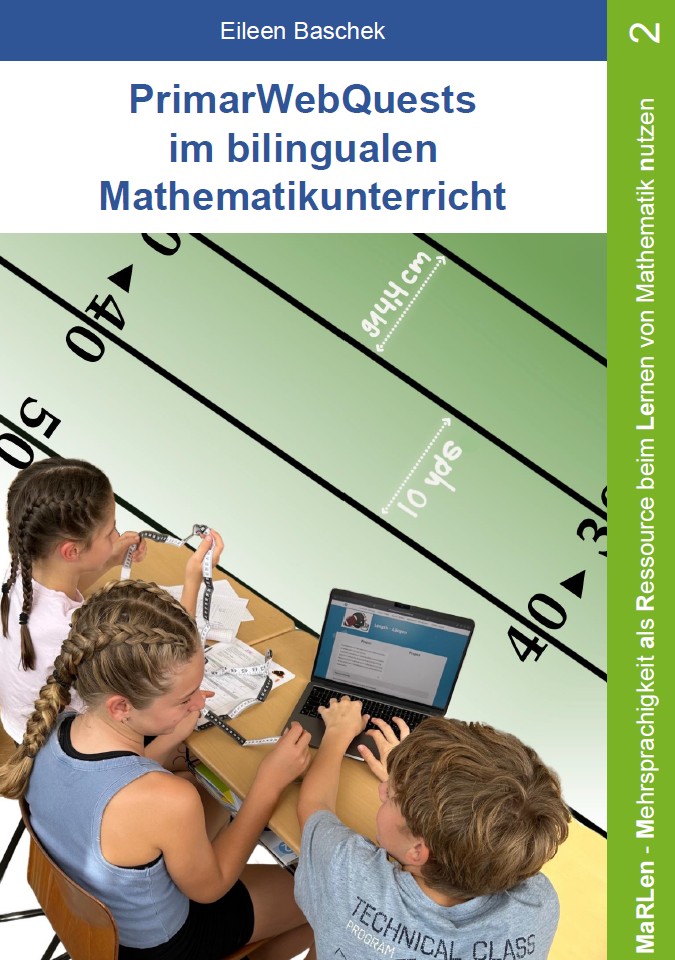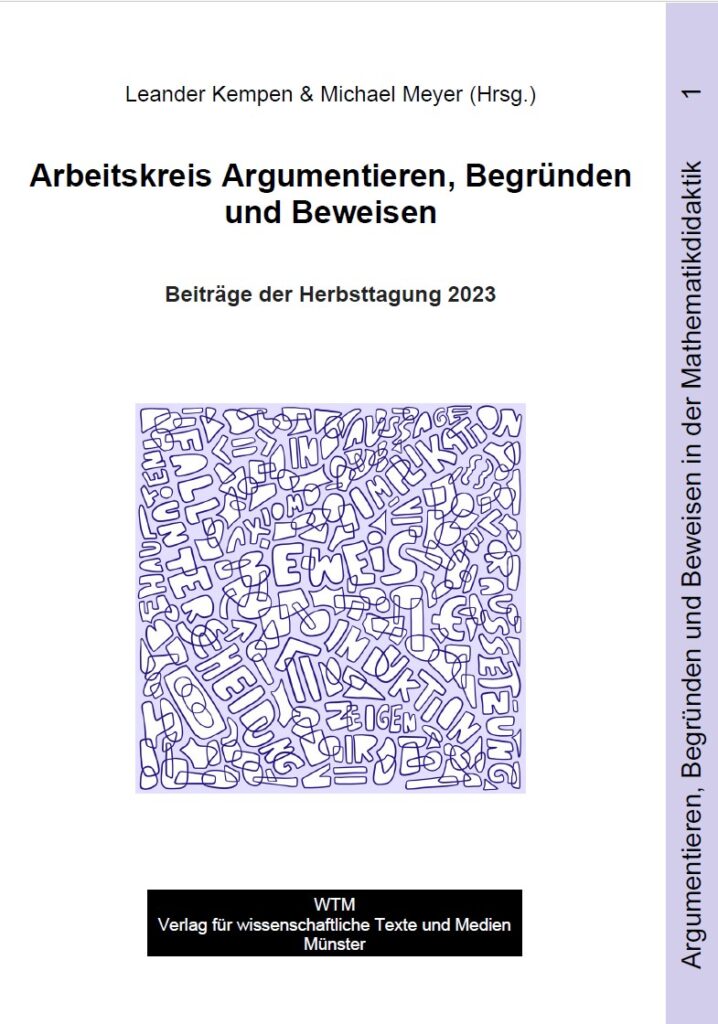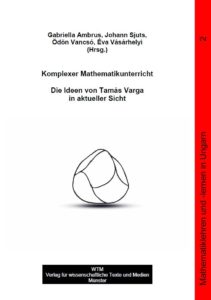 Die Ideen von Tamás Varga in aktueller Sicht
Die Ideen von Tamás Varga in aktueller Sicht
Band 2 der Reihe Mathematiklernen und -lehren in Ungarn
Münster: WTM-Verlag 2020.
Ca. 400 Seiten, DIN A5
978-3-95987-163-1 – Print 39,90 €
978-3-95987-164-8 – E-Book 36,90 €
https://doi.org/10.37626/GA9783959871648.0
Für Bestellungen bei edition-buchshop hier klicken
Zu den herausragenden ungarischen Persönlichkeiten in Mathematik und Mathematikdidaktik zählt Tamás Varga (1919-1987). Seine zentrale Leistung ist das Reformprojekt Komplexer Mathematikunterricht. Die dabei entwickelten und erprobten Konzepte hatten einen wegweisenden Einfluss auf den ungarischen Mathematikunterricht und weit darüber hinaus. Sie sind in vielfacher Hinsicht noch heute überaus aktuell.
Vargas Ideen betreffen vieles, was in der Mathematikdidaktik von grundlegender Bedeutung ist: Zu nennen sind die Ansätze der Gestaltung von Lehren und Lernen, die von spielerischen Vorgehensweisen bis zu heuristischen Problemlöseprozessen reichen, die mittels ausgeklügelter Aufgabensysteme schulmathematische Sachgebiete mit dem Aufbau mathematischen Wissens und Könnens verknüpfen, die auf externe Repräsentationen samt ihrem Grad von Visualisierung und Symbolisierung hohen Wert legen und die in verschiedenen und stetig weiterentwickelten Formen von Guided Discovery Learning und Inquiry Based Education dem Mathematikunterricht einen experimentellen Charakter geben.
Das vorliegende Buch verbindet Erinnerungen mit Neuinterpretationen: Persönliche Würdigungen und thematische Betrachtungen widmen sich dem Leben und Werk von Tamás Varga, seinem progressiven und innovativen Streben, den von ihm inspirierten und organisierten Reformen des Mathematikunterrichts und nicht zuletzt dem Fortbestehen und der Fortführung seiner Ideen.
Mathematik ist in Ungarn traditionell von hoher kultureller und wissenschaftlicher Bedeutung. Intention der Buchreihe „Mathematiklehren und -lernen in Ungarn“ ist es, die beispielgebende Rolle des Landes und den inspirativen Austausch über Grenzen hinweg zum Ausdruck zu bringen.
Gosztonyi, Katalin: Tamás Vargas Reformbewegung und der ungarische Guided Discovery-Ansatz. pp 9 – 26
This paper presents Tamás Varga’s work focusing especially on the Hungarian Complex Mathematics Education reform project led by him between 1963 and 1978 and the underlying conception on mathematics education named “guided discovery approach”. In the first part, I describe Varga’s career. In the second part, I situate his reform project in its international and national historical context, including the international New Math movement and the Guided Discovery teaching tradition, something which is embedded in Hungarian mathematical culture. In the third part, I propose a didactic analysis of Varga’s conception on mathematics education, underlining especially certain of its characteristics which can be related to Inquiry Based Mathematics Education. Finally I briefly discuss Varga’s legacy today.
Classification: A30, D30, D40, D50.
Keywords: Tamás Varga, Guided Discovery approach, Inquiry Based Mathematics Education, history of mathematics education, curricular reform.
https://doi.org/10.37626/GA9783959871648.0.01
Földesi, Katalin: Ein wichtiges Thema in der Korrespondenz zwischen Tamás Varga und dem Ehepaar Reményi. pp 27 – 40
Im Herbst 2019 wurde – parallel zur Tamás Varga 100 Konferenz – auch eine Ausstellung über Leben und Werk von Tamás Varga eröffnet. In dieser Ausstellung gab es ein Poster, auf dem Freunde und enge Kollegen von Tamás Varga aufgelistet waren. Zu lesen waren darauf die Namen von Gusztáv Reményi und seiner Frau. Der Teil ihrer Korrespondenz, der bei der Verfasserin dieses Artikels aufbewahrt ist, stellt – aufgrund der vielen beruflichen Aspekte – ein interessantes Dokument der frühen Stadien ihrer Freundschaft dar.
Zuerst werden wir die Teilnehmer der Korrespondenz vorstellen und dann einige allgemeine Bemerkungen machen. Wir suchen dann nach Piagets Erscheinen in der Korrespondenz, indem wir Fragen stellen, die sich auf frühere Forschungen von Tamás Varga beziehen. Schließlich geben wir weitere mögliche Aspekte der Bearbeitung der Korrespondenz an.
https://doi.org/10.37626/GA9783959871648.0.02
Stowasser, Roland J.K.: Kombinatorik mit Augenmaß – Erinnerung an Tamás Varga. pp 41 – 52
https://doi.org/10.37626/GA9783959871648.0.03
Szmerka, Gergely: Das Erbe von Tamás Varga – Film, Didaktik und narrative Identität. pp 53 – 62
On the occasion of Tamás Varga’s 100th birthday, I conducted video interviews with Hungarian and foreign colleagues and with family members from Tamás Varga. At the Varga 100 conference, a 45-minute film composed of these interviews was shown during the opening ceremony. The following narrative emerged from my work as a reporter and scriptwriter: The memory of Tamás Varga is permanently alive, the ideas that go back to him are also always present throughout the processes of change in mathematics teaching. From this point of view, there is a mathematics didactic tradition in Hungary, which is consist of many components connected to Tamás Varga and form a narrative that expresses all the characteristics.
Classification: A30, D30
Keywords: Tamás Varga, Hungarian mathematics didactic tradition, narrative memory
https://doi.org/10.37626/GA9783959871648.0.04
Ambrus, Gabriella: Untersuchung von Schülerlösungen mit Hilfe von Lösungsniveaus bei Textaufgaben mit realitätsnahem Inhalt. pp 63 – 78
In this article, some school results in connection with the solution of such word problems are discussed, which are based on realistic situa-tions. The word problems here are however special ones: they are formulated like the “conventional word problems” – where a concrete solution is expected. At the same time, the given situation of the task is open, it has solutions dependent on further conditions. A level-classifying method “solution levels” is used to evaluate the results.
Classification: D50, D70, F90, M10
Keywords: word problem, open problems, reality-based problems, modelling, problem solving
https://doi.org/10.37626/GA9783959871648.0.05
Benedek, András; Tuska, Ágnes: Synthesizing the legacy of Varga and Dienes. pp 79 – 90
Tamás Varga worked closely with Zoltán P. Dienes to provide learners with internally related experiences of creating and discovering abstract concepts, a procedure that Dienes described as “internalized action”. In instructing the way Dienes and Varga have promoted, “multiple embodiment” and the cognitive process of the learner in unaccustomed learning situations may be different for teachers and their pupils. Addressing this difference, we outline a lesson for pre-service teachers on comparing divisibility rules in various bases with the use of Dienes’s Multibase Arithmetic Blocks as an illustration of how to interface multi-level experiences. In order to answer the didactic problem of how embodied tools augment the learning process by structuring and organizing the learners’ experiences at different levels, we point to the principles that make the synthesis of the two innovators’ methods possible.
Classification: A60, B59, C30, F60, Q69, U60
Keywords: Tamás Varga, multiple embodiment, Zoltán P. Dienes’s principles, multibase arithmetic blocks, divisibility rules, manipulatives, philosophy of mathematics
https://doi.org/10.37626/GA9783959871648.0.06
Borovcnik, Manfred: Elementarisierung oder Vielfalt als Schlüssel für die Gestaltung eines Zugangs zur beurteilenden Statistik. pp 91 – 114
Elementarisation is a legitimate didactical strategy, especially in a subject area such as inferential statistics, which is considered to be extremely difficult. Here one can also refer to Varga’s position on the didactics of mathematics and examine, which orientation results from it. For this purpose, Varga’s approach to mathematics didactics as a whole is summarised, which can best be characterised by the term complexity. Varga tries to make the complexity teachable by presenting suitable task systems and developing comprehensive handouts for guided-discovery learning. The core of the presentation is a system of tasks by Varga for inferential statistics for primary school, which Varga also supplements by comments on an experimental class for nine-year-olds (!). Varga introduces heuristically and playfully to the significance test and to p values. Finally, we discuss how to continue the learning paths from these heuristic considerations to the full field of inferential statistics.
Classification: K10, K70, K50, D20.
Keywords: Stochastic teaching, elementarisation, task systems, Statistical inference, Bayes inference, Varga’s approach.
https://doi.org/10.37626/GA9783959871648.0.07
Deák, Ervin: Mathematische, historische und didaktische Betrachtungen über die Einlagerungseigenschaft der Zerlegungsgleichheit. pp 115 – 142
The present study aims to analyse some special errors in mathematical reasoning concerning a property of the relation “equivalence by dissection” in synthetic geometry (pure geometry). Although this property is of great importance it is regarded as obviousness and its problematic nature is usually concealed in mathematics teaching. This is deeply rooted in the heritage of greek mathematics and proves to be an obstacle to mathematical education. This subject belongs to a particularity of the mathematical background of teaching mathematics; nevertheless, this study includes some ideas both on other (similar) particularities and from different points of view.
Classification: A30, B50, B60, CD30, D20, D30, E40.
Keywords: Synthetic geometry, measure geometry, equivalence by dissection, mathematical background of mathematical instruction.
https://doi.org/10.37626/GA9783959871648.0.08
Dukán, András Ferenc; Szabó, Csaba; Vásárhelyi, Evá: Logic in secondary school: From Tamás Varga´s proposed curriculum to board games. pp 143 – 156
Studying international literature on the psychology of learning, brain research, and didactic we conclude that logical thinking can be improved through playing board games. The board game player performs complex logical operations and can enjoy the game with little factual knowledge. (Herber et al. 2003)
Our research is based on a school experiment with a control group. The two 9th-grade groups have basically the same knowledge and skills. The development of the two groups is compared on the basis of input and output tests and initial knowledge level measurement.
The experimental group played (non-mathematical) board games on every third mathematics lesson throughout one semester. We compared the mathematical development of the experimental group with that of the control group, that learned mathematics the traditional way of around 50% more time.
Classification: D40, D30, C60.
Keywords: Board games, logical thinking, game-based learning.
https://doi.org/10.37626/GA9783959871648.0.09
Fejes Tóth, Péter: Inferential statistics – Research on the introduction of a new topic in the Hungarian high-school curriculum. pp 157 – 180
In the Hungarian high school, statistical education is currently limited to descriptive statistics, with a few minor exceptions. In 2016, the Hungarian Academy of Sciences established the Complex Mathematics Education Research Project. One of the purposes of this project is to examine how to introduce inferential statistics into the curriculum so that the teachers accept it and teach it accordingly. Our task is to examine the international learning paths and curricula and to adapt these approaches to the situation in Hungary. The phase of the design of educational activities is finished. Activities include, amongst others, the famous lady-tasting-tea experiment and the study of experiments with regular or counterfeit coin and dice. The planned activities are currently in the test phase by selected teachers. However, the feedback is difficult to access due to the current situation with the pandemic. Nevertheless, already available feedback is analysed; we describe the planned curriculum and its background. Classification: K10, K70, K50, D20.
Keywords: Stochastic teaching, elementarisation, task systems, statistical inference, Varga’s approach, teaching activities, simulation.
https://doi.org/10.37626/GA9783959871648.0.10
Fried, Katalin: Unusual thoughts on mathematics lessons. pp 181 – 194
I was in a close personal and professional connection with Tamás Varga; first as an acquaintance, then as a student of his co-workers, later as a co-worker myself, but his greatest influence shows on my own work as a mathematician and a teacher. As I think of it, I have to realize what a huge effect his strong personality left on me; but it shows best on my methodological attitude. In this article I would like to recall memories that support these effects Tamás Varga had on me.
During the course of the complex mathematics teaching experiment, teachers, mathematicians and educators tried to find the “best” method for teaching with guided discovery. While doing so, they relied on the ideas they learnt from children. It was typical to the experiment that children took an important part in this experiment as well. As they were encouraged to share their own ideas, they often suggested ideas about the way a given problem could be looked at and handled. The findings of these experiments and attempts are not well documented, although, some articles appeared here and there and also, there was a journal dedicated to discussing the experiment (called Kapcsolat, meaning connection). Here I would like to give a glance at what kind of results children achieved. Classification: B10, C30, C70.
Keywords: Complex Mathematics Education in sense of Tamás Varga, Cognitive development
https://doi.org/10.37626/GA9783959871648.0.11
Fried, Katalin; Török, Judit; Vásárhelyi, Evá: Überbringen Störche Babys? Dinge, die wir Kindern nicht erzählen (können). pp 195 – 220
One of the main goals of the Complex Mathematics Education Experiment set by Tamás Varga was the following:
“That is, the knowledge we provide fits the closest developmental zone and developmental level of the children; and yet is mathematically correct and forward-thinking. We do not tell stork tales.” (Varga, 1974, p. 1984.)
We give some examples from the topic of number theory, where we cannot avoid telling “stork tales”, no matter how hard we try. In section 1.3 we describe some of the sources of disturbance. In section 2 we deal with the conflict of the different interpretations of some concepts occurring in primary/secondary school and university education, such as: “divisibility”, “divisor”, “common divisor”, “greatest common divisor”, “division with remainder”, the perceived or real special properties of zero, and “prime number”. We believe that it is important to make prospective teachers aware what facts they hide and why when teaching. In section 3 we present problems that can be discussed with children of different ages and different abstraction levels.
Classification: D70, E40, F60, U60.
Keywords: misconceptions and student errors, concept formation, treatment of mathematical concepts and definitions in mathematics education, number theory, educational games.
https://doi.org/10.37626/GA9783959871648.0.12
Jakab, Enikö: It is worth turning on GeoGebra 3D. pp 221 – 234
I am a PhD student at the Doctoral School of Mathematics and Computer Science at University of Debrecen in the topic of Mathematical Competence Development with ICT.
In this article, I present some examples, where the 3D version of GeoGebra can be applied successfully not only in research but also in everyday work. I have picked examples that require spatial representation but where it is much more complicated and less effective to achieve through concrete manipulatives than through any 3-dimensional dynamic geometric program. However, the two-dimensional version of any dynamic geometry program could be used to construct a figure, but besides easy constructing, formatting the figures is easier in the 3D version.
Classification: D40, N80, U70.
Keywords: development of spatial view, spatial experience, GeoGebra 3D worksheet.
https://doi.org/10.37626/GA9783959871648.0.13
Jánvári, Zsuzsanna: Teaching descriptive statistics, developing statistical literacy – Results of a pilot study. pp 235 – 246
Descriptive statistics is being taught in secondary education for 15 years in Hungary. Despite the short time elapsed, as the results of the intermediate level Mathematics school-leaving exams present, statistics is a popular and successful topic. My supervisor examined this topic in detail in his doctoral dissertation (Csapodi 2017). My main interest and focus are on the conceptual knowledge of students, in the sense of how statistics knowledge becoming part of their knowledge network.
What kind of competences do these students need and what kind of competences do statistics develop? Can they compare sets of data? Do they become critical regarding the results of the given task and find the results questionable? Are they simply able to argue? Do students dare to question the relevance of the calculated values in a task or accept statistical results as something conclusive?
In this paper I refer to the pilot study, which was the first step of my research plan. 111 students 12th grade from my secondary school were involved in the study. My main purpose was to get an insight into the mentioned issues. This pilot research consists of a worksheet for students (5 exercises) and an attitude test for their teachers (experiences, attitude, own results, opinion about the students‘ worksheet). I’d like to share the results of the first summing up of this research. Classification: K10, K40
Keywords: Comprehensive works on stochastics, the teaching of stochastics, descriptive statistics, statistical data handling, graphical methods of data representation, data analysis
https://doi.org/10.37626/GA9783959871648.0.14
Kántor, Tünde: Tamás Varga und sein inspirierender Einfluss auf den Mathematikunterricht – ein Blick zurück. pp 247 – 272
This article takes up some details of Tamás Varga’s legacy from the perspective of a former student. The focus is on his ideas, opinions, reviews and articles on mathematics education in secondary schools. Two school books had a special impact at that time in Hungary, the mathematics textbook (1949/50) by Rózsa Péter and Tibor Gallai for the 1st class of middle schools (14-15 years) and its continuation „Mathematics for the 1st class of middle schools“ (1956) by Tamás Varga and László Faragó. Some of the problems Tamás Varga posed in the Mathematical Journal (e.g. Farkas Bolyai’s theorem about the decomposing equality of plane figures and problems with the object area of the definitions of plane figures) are also important. The following explanations refer to his articles on mathematics education and his dissertation on complex mathematics education (1975).
Classification: A30, C10, D30, U20.
Keywords: History of mathematics education, Hungarian math books for secondary schools, beginning of math lessons by guided discovery
https://doi.org/10.37626/GA9783959871648.0.15
Matsuura, Ryota; Szász, Réka: Guided discovery for preservice teachers. pp 273 – 282
In this paper, we present an approach to teacher education at a study abroad program in Hungary for American and international pre-service and in-service teachers. The aim of the program is for participants to learn about the guided discovery pedagogy used in Hungarian mathematics classrooms, stemming from the work of Tamás Varga, which is closely related to inquiry based learning. The program applies the principles of guided discovery to teacher education itself: participants are immersed in the guided discovery approach, hence their view of mathematics is challenged, and they look for their own tools to likewise challenge their future students. In the paper, we illustrate this approach to teacher education by describing an example of a guided discovery task to which participants are exposed, and discuss how they engage in their own task design and reflection.
Classification: B50
Keywords: mathematics education, guided discovery, teacher education, pre-service teachers, in-service teachers, problem series, task design, inquiry based learning
https://doi.org/10.37626/GA9783959871648.0.16
Pálfalvi, Józsefiné: Reformen des Mathematikunterrichts in Ungarn in den 1960-70er Jahren. pp 283 – 304
Tamás Varga was the central figure in the Hungarian reform project Complex Mathematics Education. His achievements in the redesign of mathematics lessons in a whole country concern the inclusion of international developments in mathematics didactics as well as the involvement of a large number of people from science, administration and education. His innovative work for teaching and learning mathematics included goals, contents, methods and resources. The reorganization program was extensive and profound. In addition to the size of the project, the result also includes the own dynamic that was emerging during the implementation. The following explanations give an insight into the the decades-long reform project.
Classification: D30
Keywords: Complex Mathematics Education, reorganization of teaching and learning mathematics, reform project
https://doi.org/10.37626/GA9783959871648.0.17
Pintér, Marianna: The effect of complex mathematics teachings experiments on my work. pp 305 – 316
It is not easy to answer the question of how the complex mathematics teaching experiment – marked by the name of Tamás Varga – affects my work. Working at ELTE’s Department of Mathematics in the Faculty of Primary and Pre-School Education, the principles and results of the experiment are the foundation of my every lecture. In this writing, I will try to show how this works in my practice.
Classification: B50; E40; D50; E10; M10.
Keywords: Tamás Varga, Complex mathematics teaching experiment, teacher training for primary and pre-school education, alpha-generation, digital tools and learning materials
https://doi.org/10.37626/GA9783959871648.0.18
Rybak, Anna: Discovering mathematical knowledge by students as the way to successful learning of mathematics. pp 317 – 332
Students in many countries have problems learning mathematics. Many students do not like mathematics. It is also a problem for teachers. The question has to be answered: Why does math education cause so many problems? We have set up the Centre for Creative Learning of Mathematics at the University of Bialystok (Poland). It is a place where we try to create appropriate athmosphere and circumstances for students of all ages to become active discoverers of mathematics, not just passive recipients of knowledge from books or teachers. As a theoretical background we took ideas from Tamás Varga, Zofia Krygowska, the theory of constructivism, the strategy of functional mathematics teaching and problem-solving method. Lessons and workshops for students in our Centre are based on the combination of the following ideas: The participants solve practical or theoretical problems (problem solving method) and carry out concrete, representative and abstract activities (strategy of functional mathematics teaching by Z. Krygowska) which help them discover and formulate knowledge (constructivism). The whole process corresponds very well to some of T. Varga’s important ideas or his conviction of the main objectives of mathematics teaching: Students explore the knowledge themselves and think independently. The subject of mathematics is transformed into a thought formulation process in which students turn from the role of passive recipients to the active knowledge creation.
Classification: A80.
Keywords: T. Varga, Z. Krygowska, constructivism, strategy of functional teaching of mathematics, problem solving method, creative learning
https://doi.org/10.37626/GA9783959871648.0.19
Sjuts, Johann: Die Bedeutung von Darstellungen beim Aufbau probabilistischen und algebraischen Denkens in ausgewählten deutschsprachigen Büchern von Tamás Varga. pp 333 – 352
The textbooks in school mathematics written by Tamás Varga were considered very innovative. This was mainly because they prepared new topics such as logic, combinatorics and stochastics for mathematics lessons. Connected with this, they contained carefully considered concepts for the development of mathematical thinking – especially in the form of suitable representations.
Thinking materializes in representations, mathematical thinking in specific representations. Representations on the development of mathematical concepts and tools make a significant contribution to the organization of knowledge and abilities. Such a cognitive-theoretical view, which can certainly be found in Vargas’s works, emphasizes the language and tool character of school mathematics.
The article demonstrates the significance of conventional representations for the development of probabilistic and algebraic thinking.
Classification: C32, C33, H10, K10, U20
Keywords: probabilistic and algebraic thinking, mathematical representation, textbooks in school mathematics
https://doi.org/10.37626/GA9783959871648.0.20
Szücs, Kinga: Arguing and Proving in Vargas´s German-Language Work. pp 353 – 366
Vargas’s work focused on children´s autonomous activities as well as on their intrinsic motivation in mathematics classrooms and was designed in the sense of the so-called genetic method (Ambrus & Vancsó, 2017, p. 7). His goal was to enable learners to discover mathematics in various every-day situations and to find appropriate mathematical models (Ambrus & Vancsó, 2017, p. 10). In a playful way, he wanted to convey methods, models and basic concepts of mathematics and especially the rules of logic. However, a main and basic area of mathematics, which also should be communicated to children from the very beginning, and which is not independent of logics, is the area of arguing and proving in mathematics. The question, how Varga placed and communicated arguments and proofs suitable for 1st-to-4th-grade learners, will be answered by analysing his German-language book Engel, Varga & Walser (1974). In this issue, two of his favourite mathematical areas, namely combinatorics and probability theory are brought to bear.
ZDM Subject Classification: E50, K20, K50
Key words and phrases: Reasoning and proving in the mathematics class-room, Combinatorics, Probability concept and probability theory
https://doi.org/10.37626/GA9783959871648.0.21
Vancsó, Ödön; Varga, Eszter: Kannst du das System schlagen? Wetten im Sport als Kontext für die Kombination der Ideen der klassischen, statistischen und subjektivistischen Wahrscheinlichkeit. pp 367 – 390
The motivational value of the context is clearly demonstrated by students in classroom situations posing the title question. This excellent real-life question triggered the design of a special instructional sequence culminating in the addressed problem and aiming to combine different approaches to probability. Considering students’ usual struggle with the field, this attempt may prove valuable. As in the history of Stochastics, investigating the rationality behind the system of odds requires parallel handling of chances and expected value, and can lead to a deeper understanding of complex mathematical models. Recently, Series of Problems have been in the center of attention of the Complex Mathematics Education Research Project in general, as an important characteristic of the Hungarian Guided Discovery approach. Our design roots in this highly problem based tradition and adopts some of Tamás Varga’s ideas in instruction. In our paper, the details and structure of the designed teaching material will be displayed utilizing the tools of this research.
Following centuries of tradition, sports betting is flourishing nowadays, particularly benefitting from the opportunities of online forums. Providing entertainment for many, it has great motivational value for students, who often pose the particular question in the title. This question is spot-on: gambling is a highly regulated, nevertheless always lucrative market. From an educational point of view, sports betting gives us a more complex perspective on probability than combinatorial games. History and teaching practice both suggest that the concept of probability bears serious cognitive load, and students often burdened with biases that makes the heart of the concept elude them. Furthermore, instruction sometimes lacks the adequate means to harmonize even the correctly introduced aspects of probability, leaving the students with either fragmented or contradicting ideas. In our paper we will make an attempt to connect the classical (laplacian), statistical (frequentistical) and subjectivistic (bayesian) approaches of probability through a gradually constructed task sequence organized around sports betting. We hypothesize that the investigation of the rationality of odds can foster a more integrated understanding of the concepts probability and expected value.
Classification: D40, M10, K50, U30, U40, U60.
Keywords: probability, expected value, risk, problem-solving, problem series, modeling, teaching process
https://doi.org/10.37626/GA9783959871648.0.22
